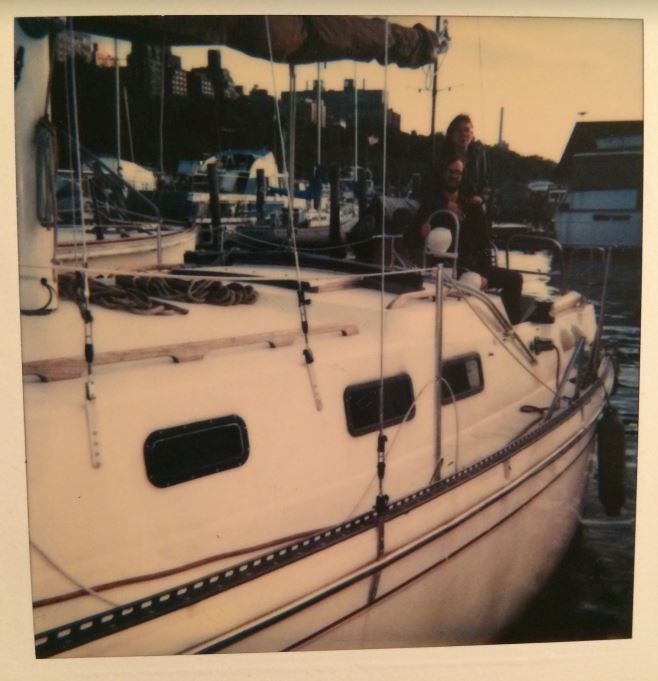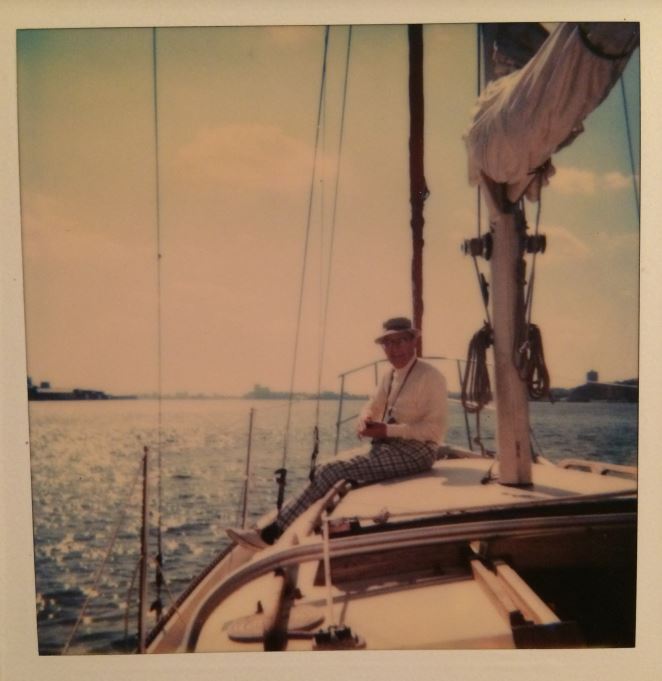Just Roll With It: Behind the Tiny House
Building my own house is not a dream that I’ve harbored since my childhood like some of my tiny house fellows. Instead, I came to it through a series of economic and logistic considerations. After much budget-crunching and soul-searching, I realized that building my own tiny house was a way to start my life at a level that otherwise would not have been accessible to me for at least another decade.
I found tiny houses through an internet article on November 13, 2013. The exact date is immortalized in an email I sent to my older sister, Mairead, with a link to the Tumbleweed Tiny House Company and a message saying:
I am honestly considering this. It would be less per month than my current rent, and I could turn it into a mini Miranda’s Hearth!!
(Don’t tell Mom. Yet.)
The article that first grabbed my attention described a couple out in Portland, OR who had done the math and realized that in ten years they had spent $60,000 in rent that they would never see again. I was already carefully keeping track of my monthly budget but I realized that while I knew the percentage my rent took out of my monthly income, nearly half, I had never seen or thought of the annual figure.
At that point, I had been living in Greater Boston in a ridiculously affordable graduate school apartment for just over two years and had still spent nearly $15,000 in rent. For a full-time student and part-time art educator making $16,000 a year, this was a staggering sum. And so my tiny house journey began, not from idealism or aesthetics or philosophy but from straight numbers and the dawning realization that my economic situation was not sustainable.
– – –
Despite my initial lack of desire to build my own home, I realized throughout the process that the roots for this concept run deep. I grew up in Stamford, CT to parents from modest backgrounds in Flint, MI and North Adams, MA. My father, a philosophy major drop-out, was one of the few people who understood how computers worked on Wall Street in the late 80’s and early 90’s which made him enough money to land us in Fairfield County, an area far outside the previous stratospheres of my parents lives.
 At that time, my parents lived on a 30 foot sloop in the 79th Street Boat Basin in New York City. They lived a romantic double life of my father’s invention, sleeping year round in their boat, Jeanette, surrounded by handwritten journals and buoyed by the gentle swells that made it through the breakwater only to get up, put on a suit, and take the subway to Wall Street.
At that time, my parents lived on a 30 foot sloop in the 79th Street Boat Basin in New York City. They lived a romantic double life of my father’s invention, sleeping year round in their boat, Jeanette, surrounded by handwritten journals and buoyed by the gentle swells that made it through the breakwater only to get up, put on a suit, and take the subway to Wall Street.
My father lasted four years on Jeanette and inspired his older brother, Uncle Doug, who lives on a houseboat at the 79th Street Boat Basin to this day. My mother joined him in 1986 and made it through two winters until, in the summer of 1988, she got a fortune from a chinese restaurant that said “Leave your boat and move ashore.” And so they did.
By the time I was born in 1993, my parents were falling more deeply into the life that they had play acted at for so long. That year they got their second daughter, their first house, a two year old puppy, and a blue Ford Escort. They had moved out to the suburbs where, despite making six figures, they split a single car and my father got up at five in the morning everyday to take the bus down Long Ridge Road to the Stamford Train Station and on into the city.
I don’t remember these early years, what in my family vernacular we now call the Before Time. My first memories come later, after my parents divorced and my father lost his job. My father stayed in the oriental hunting cabin that was my childhood home, looking out over a waterfall in the East Branch of the Mianus River, until he went bankrupt and foreclosed on it in 2007, the year I went to college.
It was a beautiful house built in 1903 and never renovated. The walls of the living room were made out of solid logs stacked and shellacked together, arching into a steep two story ceiling that was met by a hand-laid stone hearth. There were frosted glass windows with oriental scenes and a beautiful lattice work screen next to the living room of the ancient symbol for peace which, when viewed from the wrong side, was an unfortunate series of Swastikas.
The house was a well-sized four-bedroom with two floors. Not large by the standards of our neighborhood, but large enough to provide my fractured family with separate worlds to hide ourselves in. My father denned himself into the computer room, a small area connected to the kitchen, while my sister and I holed up in our rooms on the second floor. I have one of those picture perfect memories, or perhaps a compilation from several vivid memories, of running from the warm circle of light that was my room down the stairs, through the unlit and unheated dining room, past the empty guest room, living room, and master bedroom, and into the warm circle of light that was the computer room.
I promised myself during these frigid, dark sprints that I would never live in a house where I didn’t use every single room every single day. Little did I know how apt this would become roughly a decade later.
While my father clung to the sinking ship that was dubbed, in our family, The Hunting Lodge, my mother moved through a series of apartments. Initially, she lived in a one bedroom unit in a two story brick apartment compound on Hope Street. She bought a bunkbed for Mairead and me that fit next to her bed in the single room. In the living room, she constructed two large wooden frames and stretched a faux velvet maroon fabric over them. She set one of these pieces, which looked like book covers for giants, in the each corner of the living room and left a little entrance on one side, ingeniously turning our humble abode into a three bedroom palace. We called these improvised rooms our “corners,” one each for me and for Mairead, and we decked them out with all the worldly possessions of elementary schoolers. Books, lava lamps, candles, stuffed animals, games.
Next we moved to a two bedroom apartment in the same complex. This time, my mother got her own room and she put the bunkbed in the middle of the room shared I shared with my sister. The maroon book covers were opened and extended the length of the room to create a narrow corridor. I slept in the top bunk and Mum used the extra maroon fabric to create a thin wall on the far side of my bed and the close side of my sisters, creating a puzzle-like structure of space that once again provided my sister and I with our own little worlds.
After that, we made our way into a three bedroom apartment and then to a four bedroom Cape thirty minutes north of Stamford where we could, barely, afford it. I emulated my mother’s early example, continuing to create small spaces within spaces. First, I made a play area under my raised bed, hanging fabric off the side so I could teach my many stuffed animals without them getting distracted. Later, I plastered the inside of my closet with cutouts from National Geographic, ran in an extension cord for light, and plopped down my small blue arm chair in an attempt to create a secret library.
I left Connecticut in 2007, three weeks after I turned fourteen, to attend the Program for the Exceptionally Gifted at Mary Baldwin College. I spent four years there while getting a BA in Painting, thrilled that for the first time in ten years I had one room to call my own. I burrowed into each new dorm room with the intensity of a pair of parents creating their first nursery. Bright, printed wall hangings covered every inch of available wall space, a rug laid out over the cold linoleum floors, a (self-consciously limited) number of stuffed animals neatly arranged on the bed. Even my under-the-bed classroom made a reappearance, this time as a study nook lined with large slab-like textbooks on art history, psychology, and music theory.
In 2011, I graduated college and moved to Boston, a bright-eyed and eager overly-educated seventeen year old with a budding ambition to start a community art center and a strong desire to prove to the world that despite being a young, blonde girl-child I could handle myself perfectly well, thank you very much. I was accepted at Lesley University in their M.ed. in Community Art program and moved into a tiny room in Medford. Later, I upscaled to a larger room in the same apartment with a small walk-in closet that acted, in my life, as a studio.
It was in this apartment, before I moved again to my last apartment in Arlington, that I discovered the burgeoning tiny house community. By the time I bought my plans and framed the first wall of my tiny house, I had lived in thirteen different rooms in six different towns in twenty two years and never wanted to move again.

